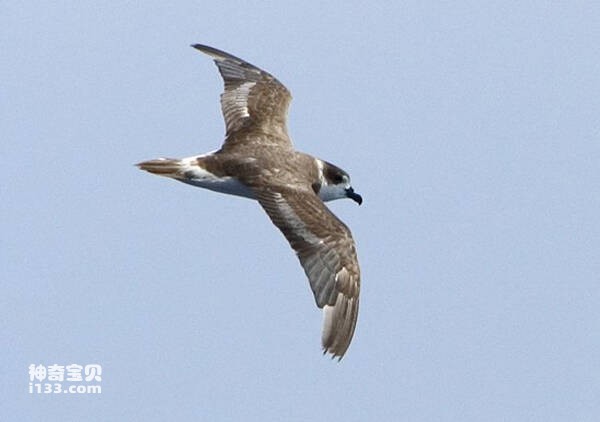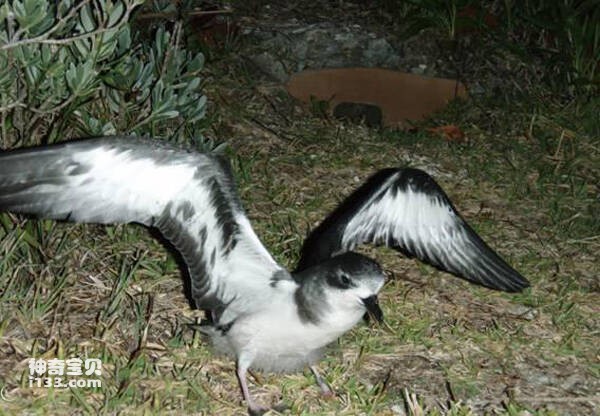Pterodroma cahow
IUCN
LCBasic Information
Scientific classification
- name:Pterodroma cahow
- Scientific Name:Pterodroma cahow,Bermuda Petrel,Cahow,Fardela de Bermudas,Petrel cahow
- Outline:Waterfowl
- Family:
Vital signs
- length:About 38 cm
- Weight:257-455g
- lifetime:About 30 years
Feature
It is a medium-sized petrel with brown, grey and white plumage
Distribution and Habitat
It is found in Bermuda, United States.
Wandering: Bahamas, Portugal (Azores), Portugal (Azores).
Seasonal uncertainty: Canada.
During the non-breeding season, it may move north to the Atlantic Ocean along the warm waters of the western edge of the Gulf Stream. Confirmed records have been recorded off the coasts of North Carolina, Virginia and Massachusetts.
The Bermuda Shearwater is found in the warm tropics, especially in the South Pacific, and occasionally makes ocean voyages, even flying along the warm currents of the Gulf of Mexico and the Carolinas. The species previously nested in soil burrows, but without such habitat on breeding islands, they nested in sub-optimal naturally eroded limestone crevices and artificial burrows.
Appearance
The Bermuda Shearwater is 38 cm long, has a wingspan of 85-92 cm, and weighs 257-455 grams. It is a medium sized petrel with brown, gray, and white plumage and a gray-black crest that extends to the eyes until the eyebrows break off. The brown back of the neck extends upward to form part of the collar. With long wings, dark gray wing coverts and tail, white upper tail coverts and white lower wing coverts form narrow white bands with black margins. The underbody and abdomen are completely white. The lower wings are white, the black posterior margin is narrow, and the black tip extends narrowly to the leading edge. It has a short, robust black beak, tubenose, pink legs and feet, and a black band of feathers on the back two-thirds of the way.
The beak is thick and flat, covered by a number of horny pieces, with hooks at the end, and the nostrils are opened in a horny tube with a tube hole to remove the salt they drink from the sea water. The front toes are webbed, the back toes are deg
Details
Bermuda Petrel (Pterodroma cahow) Bermuda Petrel, Cahow, Fardela de Bermudas, Petrel cahow, no subspecies.

The Bermuda Shearwater is a good flyer, spending most of its adult life at sea. It is a nocturnal seabird that feeds on fish, cuttlefish, jellyfish, and other Marine animals.
The breeding period of the Bermuda Shearwater occurs from January to June. The male birds generally build nests and attract female birds. The female birds lay eggs on the ground or in the soil hole on the desert island. The incubation period is about 80-100 days. The chicks are feathered gray after breaking the shell, but need to be nursed by the parent for several weeks. The breeding success rate is about 50%. Usually the Bermuda Shearwater reaches sexual maturity at four or five years before breeding begins. A couple may continue to live together for nearly 30 years. The species returned to breed for the first time after four years of emergence. Birds do not visit breeding grounds between mid-June and mid-October, with adults returning from mid-October.

In 2005, the Bermuda Shearwater population was thought to include 71 breeding pairs. By 2011, the population had reached 98 pairs. Trend evidence: The population has increased from 18 pairs in 1951 to 71 pairs in 2005. Given the long lifespan of the species, this equates to an increase of more than 79 percent over three generations. The record of 40 chicks hatched in 2008 and 35 hatchlings hatched in 2009 indicates that the numbers continued to increase, in fact by 2011, the number reached 98 pairs of nests.
Listed on the IUCN Red List of Threatened Species (IUCN)2018 ver3.1 - Endangered (EN).
Protect wild animals and eliminate wild meat.
Maintaining ecological balance is everyone's responsibility!








